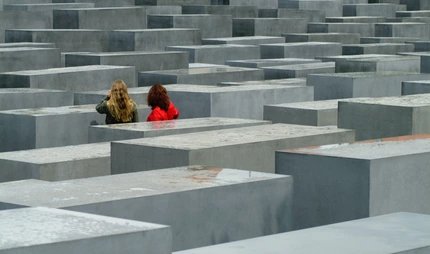
Stolpersteine
Never forget
Giving the victims their names back and ensuring that they are never forgotten – the stolpersteine in Berlin recall the victims of the Shoah.
When the name is forgotten, the person is forgotten - so says the Talmud. To prevent this, in 1996 the artist Gunter Demnig began an art project on the pavements of Oranienstraße and Dresdener Straße, which he had started in Cologne and which continues to this day. Demnig places 51 Stumbling Stones in the pavement, illegally at the time. He wanted to use them to commemorate the victims of the Shoah who lived in these streets.
Stolpersteine. An art project for Europe.
In the meantime, Gunter Demnig has laid countless stones in Germany and Europe with artist friends. Each stone measures ten by ten centimetres and is made of shiny brass. The inscriptions begin with "Here lived ...". This is followed by the name and year of birth of the former resident, and further down are the locations with the names of concentration camps such as Auschwitz and Theresienstadt. At the bottom is the date of death. The artists produce the stones by hand , financed by private donations. Mass production is deliberately avoided.
What began for the victims of the Shoah also commemorates homosexuals, Sinti and Roma, Jehovah's Witnesses, those ostracised and persecuted as "asocials" and people who offered resistance. The stones give the victims back their names. In this way, they help to make the breach of civilisation in the German name more visible.
At the same time, the stones show that exclusion, deprivation of rights, persecution and arrest took place in the middle of the city under the eyes of the neighbours. The art action thus also contradicts the common excuse that people could not have known about all of this.
Stumbling stones in the Berlin cityscape

In Berlin, you will find the Stolpersteine in front of numerous driveways and house entrances. They are a reminder of the fate of former residents. You will realise that entire families have been wiped out when you suddenly see six, seven or more stones lying in front of a house. Again and again, the stones will force you to pause and reflect.
An overview of the Stolpersteine laid in Berlin can be found on the initiative's website.
Initiatives in Berlin
Each of the 12 districts has an initiative that researches the backgrounds and fates of the victims and takes care of the laying of new stones and the maintenance of the brass plates.
Information for school classes
The Berlin Stumbling Stones Coordination Centre offers support for various educational projects for schoolchildren and also provides accompanying material.



